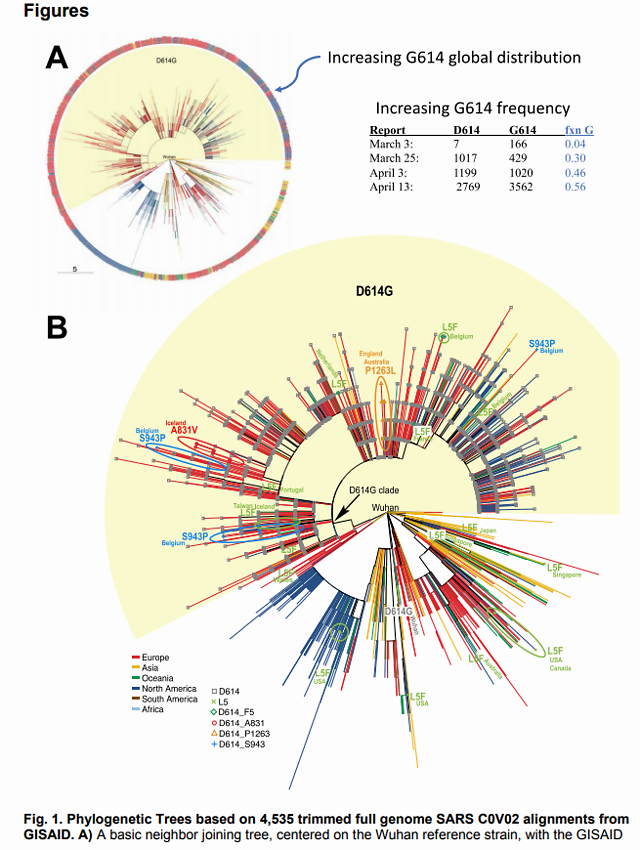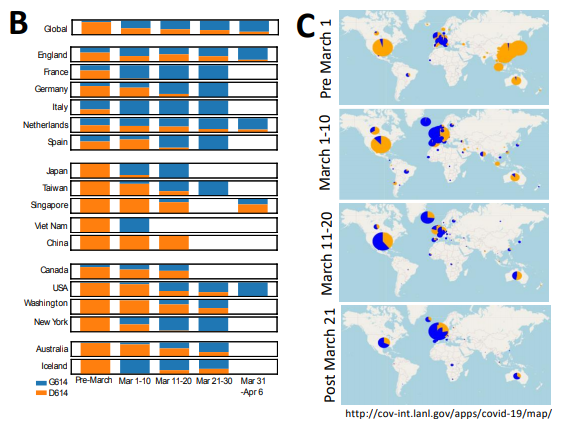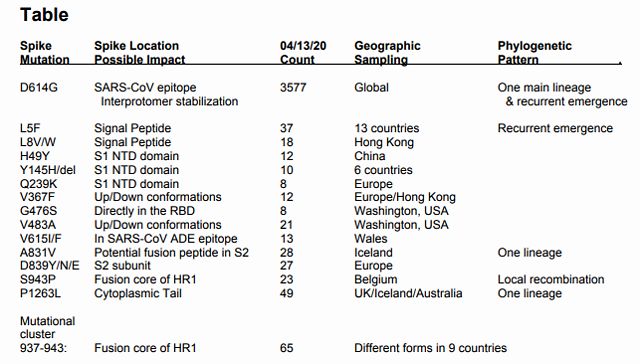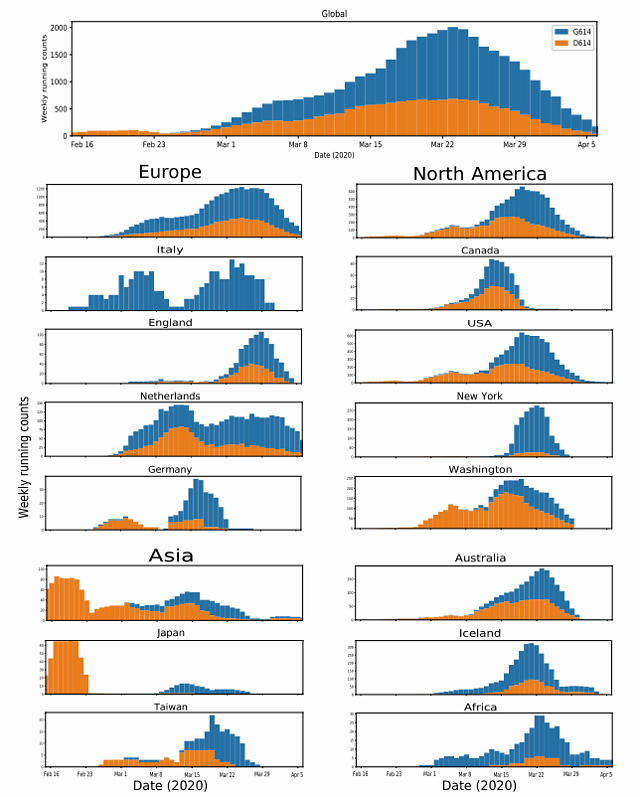Scientists have found a novel coronavirus mutation that has attracted "urgent attention" because it makes the virus more infectious and already dominates where it arrives, including parts of the United States.
Scientists have found a novel coronavirus mutation that has attracted "urgent attention" because it makes the virus more infectious and already dominates where it arrives, including parts of the United States.
Research shows that mutations that make coronavirus more infectious have "dominated" the United States and Europe, and the vaccine under development may not be able to "resist" it enough.
Researchers at Los Alamos National Laboratory (LANL), New Mexico, said the mutant began spreading in Europe in early February.
Since then, it has entered the United States. By March, it has become the most common and aggressive strain on the east coast of the United States. Scientists say it is now the main strain in the world.

Figure 1. A phylogenetic tree based on 4535 pruned genomes provided by gisaid and compared with the novel coronavirus

Figure 2. By March, the proportion of sequences with d614g mutations increased in each well sampled region of the gisaid database.
In their report (not yet peer-reviewed but published on BioRxiv), researchers warned that vaccines currently being developed in the United States may not be effective against this mutant strain and urged consideration of these findings in further work for better application in novel coronavirus
COVID-19 therapy and injection.
In general, the novel coronavirus is relatively stable than the general virus, which means that it does not mutate at an extremely high rate or rate.
But this does not mean that it does not have mutations at all, or that it limits those mutations that may have catastrophic consequences.
They Download all viral genome sequences daily in this analysis and upload them to the largest international database, GISAID, explaining how and where viruses mutate.
As research progressed, the team identified 14 mutations.This mutation seems to make the virus's surface "spike" proteins more capable of attacking human cells and more resistant to our antibody response.

Table 1. Summary of relevant mutations tracked by researchers in the spikes of
COVID-19.With the exception of D614G, all other mutations in the neocoronal spike protein remain rare; nevertheless, they will continue to monitor it potentially immunologically.
Some viruses are likely to be isolated from the community and suddenly emerge as by-products of the way viral genomes are sampled during their tracking.
At the same time, writes co-authors from Los Alamos, Duke and Sheffield Universities in the UK, other models may represent wider and more worrisome spread and change.
At present, it is not clear whether the "spike" that produces the mutation of the novel coronavirus first appeared in China or Europe, but it undoubtedly gathered momentum in Europe and then swept across the world.
When scientists first reported the mutant protein Spike D614G in March, it appeared only seven times in the sequence uploaded to GISAID (about two weeks later than real-time).
"However, since early April, sampling of GISAID data has shown that the frequency of G614 has increased at an alarming rate throughout March and clearly indicates that its geographic distribution is expanding," the researchers wrote in an online report on April 30.
It seems that at some point, the G614 mutation and another D614 mutation merge into the D614G mutation.Together, they become dominant and more infectious through multiple modes.After that, spike proteins have a higher infectivity, can more easily bind to receptors on human lung cells, become more active, and may even be easier to avoid antibodies produced by the human body against the virus.

Figure 3. Continuous weekly average counts show the relative numbers of D614 (orange) and G614 (blue) in different regions of the world.
"Given the importance of spike proteins in both viral infectivity and as antibody targets, we urgently need to establish a''early warning''pipeline to assess the evolution of the novel coronavirus
COVID-19 pandemic in this spike mutation," the study authors write.
If the pandemic fails to weaken, this may exacerbate the likelihood of antigen drift, as well as the accumulation of immunologically relevant mutations in populations that take a year or more to get their first dose of vaccine.
Researchers warn that developing vaccines may not take this into account, and that the effectiveness of these vaccines against currently dominant strains may be diminished, failing to achieve the desired effect: "This is reasonable, and by taking this risk now, we may avoid missing important evolutionary mutations in the virus, and if we ignore these mutations, eventuallyIt may inhibit the clinical effectiveness of the first vaccines."
The discovery of such mutations may play a role in many recent vaccine, drug clinical trials in various countries, including those from enterprises and institutions such as Moderna, Inovio and Pfizer.




